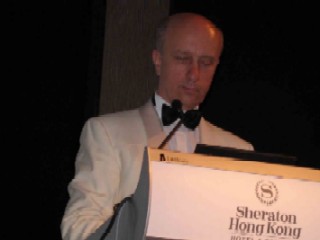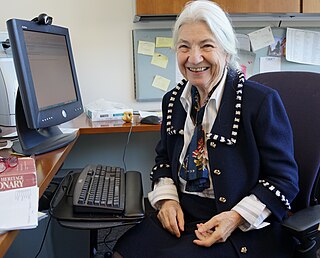Related Research Articles

The Institute of Electrical and Electronics Engineers (IEEE) is an American 501(c)(3) professional association for electronics engineering, electrical engineering, and other related disciplines.

The Institute of Radio Engineers (IRE) was a professional organization which existed from 1912 until December 31, 1962. On January 1, 1963, it merged with the American Institute of Electrical Engineers (AIEE) to form the Institute of Electrical and Electronics Engineers (IEEE).

Jun-ichi Nishizawa was a Japanese engineer and inventor. He is known for his electronic inventions since the 1950s, including the PIN diode, static induction transistor, static induction thyristor, SIT/SITh. His inventions contributed to the development of internet technology and the information age.
Ernst Adolph Guillemin was an American electrical engineer and computer scientist at the Massachusetts Institute of Technology who spent his career extending the art and science of linear network analysis and synthesis. His nephew Victor Guillemin is a math professor at MIT, his nephew Robert Charles Guillemin was a sidewalk artist, his great-niece Karen Guillemin is a biology professor at the University of Oregon, and his granddaughter Mary Elizabeth Meyerand is a Medical Physics Professor at the University of Wisconsin-Madison.

The IEEE Medal of Honor is the highest recognition of the Institute of Electrical and Electronics Engineers (IEEE). It has been awarded since 1917, when its first recipient was Major Edwin H. Armstrong and is given for an exceptional contribution or an extraordinary career in the IEEE fields of interest. The award consists of a gold medal, bronze replica, certificate, and honorarium. The Medal of Honor may only be awarded to an individual.

Adam Waldemar Skorek is a Canadian University professor and a Polish engineer. He was born in Krzczonów, Lublin, Poland.
Joel Stanley Engel is an American electrical engineer who made fundamental contributions to the development of cellular networks.

Ruzena Bajcsy is an American engineer and computer scientist who specializes in robotics. She is professor of electrical engineering and computer sciences at the University of California, Berkeley, where she is also director emerita of CITRIS.
The Proceedings of the IEEE is a monthly peer-reviewed scientific journal published by the Institute of Electrical and Electronics Engineers (IEEE). The journal focuses on electrical engineering and computer science. According to the Journal Citation Reports, the journal has a 2017 impact factor of 9.107, ranking it sixth in the category "Engineering, Electrical & Electronic." In 2018, it became fifth with an enhanced impact factor of 10.694.
Graham Clifford Goodwin is an Australian Laureate Professor of Electrical Engineering at the University of Newcastle, Australia.
Abbas Jamalipour received a PhD from Nagoya University, Nagoya, Japan. He is Professor of Ubiquitous Mobile Networking with the School of Electrical and Information Engineering, University of Sydney, Sydney, NSW, Australia.
Emmett Finley Carter was an electrical engineer that worked at several companies; most notably, he was in upper management of Sylvania Electric Products and was the director, and later president, of SRI International from 1956 to 1963.
Ranjan Kumar Mallik is an Indian electrical and communications engineer and a professor at the Department of Electrical Engineering of the Indian Institute of Technology, Delhi. He held the Jai Gupta Chair at IIT Delhi from 2007 to 2012 and the Brigadier Bhopinder Singh Chair from 2012 to 2017. He is known for his researches on multiple-input multi-output systems and is an elected fellow of all the three major Indian science academies viz. Indian Academy of Sciences, Indian National Science Academy, and The National Academy of Sciences, India. He is also an elected fellow of The World Academy of Sciences, Indian National Academy of Engineering, and The Institute of Electrical and Electronics Engineers, Inc.
Jean Armstrong is an engineering professor at Monash University in Melbourne, Australia, was named Fellow of the Institute of Electrical and Electronics Engineers (IEEE) in 2015 for "contributions to the theory and application of orthogonal frequency division multiplexing in wireless and optical communications". She was inducted to the Victorian Honour Roll of Women in 2008.
Paul Juan Tasker is an electrical engineer known for his research on microwaves. He is a professor at Cardiff University, Wales, and a Fellow of the Institute of Electrical and Electronics Engineers.
William Shieh (#333) is an electrical engineer at the University of Melbourne in Glen Waverley, Victoria, Australia. He was named a Fellow of the Institute of Electrical and Electronics Engineers in 2013 for his contributions to coherent optical orthogonal frequency-division multiplexing. He was also made a Fellow of the Optical Society.
Hugh Joseph McDermott is an electronics engineer with the Bionic Ear Institute of the University of Melbourne in East Melbourne, Australia. McDermott was named a Fellow of the Institute of Electrical and Electronics Engineers (IEEE) in 2012 for his contributions to improved sound processing techniques for cochlear implants and hearing aids.
Marimuthu Palaniswami from The University of Melbourne, Parkville, Victoria, Australia was named Fellow of the Institute of Electrical and Electronics Engineers (IEEE) in 2012 for contributions to computational intelligence, learning systems, and nonlinear modelling.
Neelesh B. Mehta is an Indian communications engineer, inventor and a professor at the Department of Electrical and Communications Engineering of the Indian Institute of Science who studies wireless networks.
Michael Charles Rotkowitz is an applied mathematician best known for his work in decentralized control theory. He was a professor at the University of Maryland, College Park, where he held appointments in the Department of Electrical and Computer Engineering (ECE) and the Institute for Systems Research (ISR), and was also affiliated with the Applied Mathematics & Statistics, and Scientific Computation Program (AMSC).
References
- ↑ "2013 elevated fellow" (PDF). IEEE Fellows Directory.